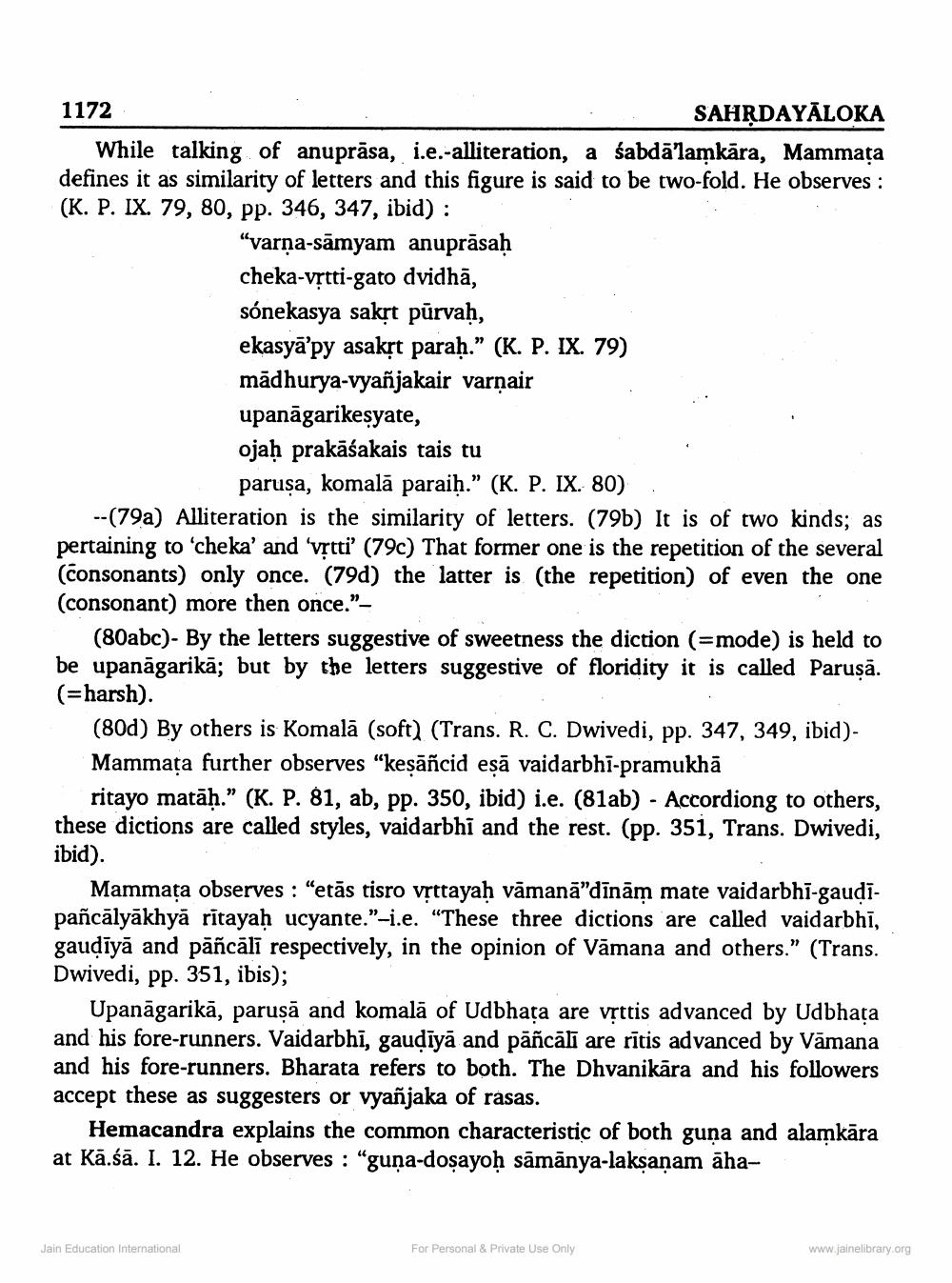________________
SAHṚDAYĀLOKA While talking of anuprāsa, i.e.-alliteration, a śabdā'lamkāra, Mammața defines it as similarity of letters and this figure is said to be two-fold. He observes : (K. P. IX. 79, 80, pp. 346, 347, ibid) :
"varṇa-sāmyam anuprāsaḥ cheka-vṛtti-gato dvidhā,
sónekasya sakṛt pūrvaḥ,
ekasya'py asakṛt parah." (K. P. IX. 79)
mādhurya-vyañjakair varṇair
upanagarikeṣyate,
ojaḥ prakāśakais tais tu
parusa, komalā paraiḥ." (K. P. IX. 80)
--(79a) Alliteration is the similarity of letters. (79b) It is of two kinds; as pertaining to 'cheka' and 'vṛtti' (79c) That former one is the repetition of the several (consonants) only once. (79d) the latter is (the repetition) of even the one (consonant) more then once."
(80abc)- By the letters suggestive of sweetness the diction (=mode) is held to be upanāgarikā; but by the letters suggestive of floridity it is called Paruṣā. (=harsh).
1172
(80d) By others is Komala (soft) (Trans. R. C. Dwivedi, pp. 347, 349, ibid)Mammata further observes "keṣāñcid eṣā vaidarbhi-pramukhā
ritayo matāḥ." (K. P. 81, ab, pp. 350, ibid) i.e. (81ab) - Accordiong to others, these dictions are called styles, vaidarbhi and the rest. (pp. 351, Trans. Dwivedi, ibid).
Mammața observes: "etās tisro vṛttayaḥ vāmanā"dīnām mate vaidarbhi-gauḍīpañcālyākhyā rītayaḥ ucyante."-i.e. "These three dictions are called vaidarbhi, gauḍīyā and pañcālī respectively, in the opinion of Vamana and others." (Trans. Dwivedi, pp. 351, ibis);
Upanagarikā, paruṣā and komalā of Udbhața are vṛttis advanced by Udbhața and his fore-runners. Vaidarbhi, gauḍīyā and pañcālī are rītis advanced by Vamana and his fore-runners. Bharata refers to both. The Dhvanikara and his followers accept these as suggesters or vyañjaka of rasas.
Hemacandra explains the common characteristic of both guna and alamkāra at Kā.śā. I. 12. He observes: "guna-dosayoḥ sāmānya-lakṣaṇam āha
Jain Education International
For Personal & Private Use Only
www.jainelibrary.org




